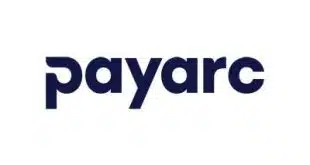These days, fighting bad actors without automation is worse than useless. It’s dangerous to the bottom line.
Automation is often thought of as a threat to humans’ jobs. I’d argue that mindset is very limiting. Technology and humans are complementary. Automation is here to enhance human actions and increase their effectiveness, not replace them.
In fact, when it comes to critical business imperatives, such as payment-fraud prevention, you can’t effectively defend your company without both forces in play. A balance of humans and cutting-edge technology is required, especially as the threat of payment fraud becomes more pervasive.
In the United States, 56% of companies were targeted by payments fraud at least once in 2022. It’s a big and growing concern for corporations. Fraudsters are more and more sophisticated and use advanced technology to infiltrate companies. In fact, most fraud is perpetrated through changes in supplier credentials and information on legitimate payments.
It’s also getting harder and harder to identify fraud when it happens. Account validation is therefore a key step to prevent fraud. Continuously monitoring supplier information to make sure fraudsters haven’t infiltrated your third-party data is the only way to block payment fraud efficiently.
Phone Tag With Phonies
Seventy percent of companies still use human callbacks to confirm vendors’ bank accounts and validate suppliers’ credential changes before payment. Human-only account validation is insufficient and out of date.
Think about it: Seventy percent of companies have someone picking up the phone to confirm the new banking details of their supplier are accurate. International companies work with thousands of suppliers, making human-only account validation a flawed and unsustainable process.
If you use callback as your main method to check credential changes, you might not get an answer immediately. You’ll need to call back. When you do and someone answers, you might still not have the right contact on the phone.
Even if you do get someone on the phone, who’s to say you’re actually talking to your supplier and not a fraudster impersonating your supplier? The rise of generative artificial intelligence and ChatGPT has made deepfakes and impersonations much more believable and common.
Fraudsters have reached an unprecedented level of sophistication. Modern fraudsters are no longer sending poorly crafted emails out of the blue asking for wire transfers. Fraudsters use their own cutting-edge tools to penetrate systems and impersonate whomever they want.
This means they can penetrate your supplier’s system and send an email from your supplier’s actual email address asking for banking-information changes. In this case, it’s almost impossible to detect the attempted fraud with manual processes. Yet, falling victim to this type of fraud can cost your organization millions.
On top of all this, manually checking supplier data for account validation can be a tiresome and low-value task for finance professionals who, after all, got into the industry to do interesting and strategic work.
Considering how frequently supplier data needs to be monitored—not just when onboarding a new supplier but throughout the entire relationship with that vendor—it’s clear that a human-only approach won’t cut it. Finance professionals need technology as support.
Thinking Strategically
Automation gives you the confidence you’re paying the right vendor and bank account every single time, no matter what’s happening inside or outside your four walls.
Account validation can be 100% effective and secure only when supported by automation. Automation is the only way to ensure systematic account validation of supplier credentials throughout the entire procure-to-pay journey, from onboarding a new supplier and throughout the whole supplier lifecycle.
Automation also removes the risk of mistakes and oversights humans naturally make in manual and time-consuming processes. Even your best people on their best days can make mistakes.
However, using fraud technology isn’t about replacing humans, it’s about supporting them. Automation removes manual tasks that don’t add value for the company or the employee. Fraud-prevention software detects and highlights the riskiest suppliers and scenarios.
If an account-validation status is delivered that indicates there could be fraud, it’s up to the finance team to determine the next steps and best course of action. It’s also up to finance teams to review their supplier policies and choices when detecting certain patterns of fraudulent behavior.
Meanwhile, the accounts-payable teams who used to pick up the phone to check supplier information can spend more time handling risky cases and setting-up strategies to prevent fraud attempts in the first place.
Talent Plus Software
Automation helps companies focus on where risk really is and where human intelligence is needed to resolve a situation. Technology frees up humans’ schedules for strategic planning by letting them spend less time on manual and time-consuming processes.
The prospect of high-value work and a more stimulating work environment increases workers’ job satisfaction and puts organizations in a better position to attract and retain talent.
Fighting fraud takes more than just talented finance teams or cutting-edge software. It takes a combination of the two. When both forces are in play, you can do much more to protect your organization and have the utmost confidence in your ability to defend against fraud.
—Baptiste Collot is cofounder and chief executive at Trustpair




